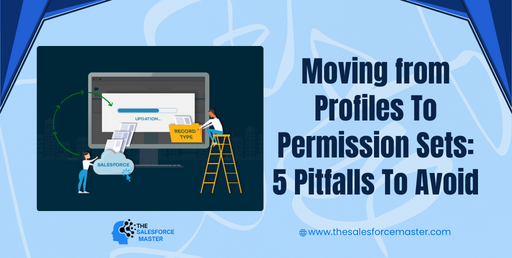
Transitioning from profiles to permission sets in Salesforce can be a crucial step in refining your organization’s security model and ensuring granular access control. However, this transition isn’t without its challenges. Here are five pitfalls to avoid during this process:
1. Incomplete Assessment of Profile Permissions:
Before migrating to permission sets, thoroughly assess the permissions granted by existing profiles. Failing to identify all required permissions may result in users losing access to essential functionalities post-transition. Conduct a comprehensive analysis of each profile’s settings and functionalities to ensure no critical permissions are overlooked.
2. Overcomplicating Permission Sets:
While permission sets offer granular control over user access, creating too many permission sets can lead to complexity and confusion. Avoid the temptation to create a multitude of permission sets for every minor variation in user roles. Instead, aim for simplicity by consolidating common permissions into broader sets that can be assigned to multiple users.
3. Lack of User Training and Communication:
Transitioning from profiles to permission sets may impact how users interact with Salesforce. Without proper training and communication, users might struggle to understand the changes and how they affect their workflows. Invest in comprehensive training sessions and clear communication to ensure users are informed about the transition, understand their new permissions, and know whom to contact for assistance.
4. Inadequate Testing and Validation:
Before implementing permission sets in a production environment, thoroughly test them in a sandbox or developer org. Test various user scenarios to ensure that permissions are correctly assigned and that users can perform their required tasks without encountering access issues. Additionally, involve key stakeholders in the testing process to validate that the assigned permissions align with their expectations and requirements.
5. Neglecting Regular Review and Maintenance:
Permissions requirements within an organization can evolve over time due to changes in roles, processes, or regulations. Failing to regularly review and update permission sets can lead to access inconsistencies or security vulnerabilities. Establish a process for periodic review and maintenance of permission sets, ensuring they align with the current needs and policies of the organization.
Summary
By avoiding these pitfalls and adopting a thoughtful approach to transitioning from profiles to permission sets, you can streamline user access management in Salesforce while maintaining security and usability for your organization.

